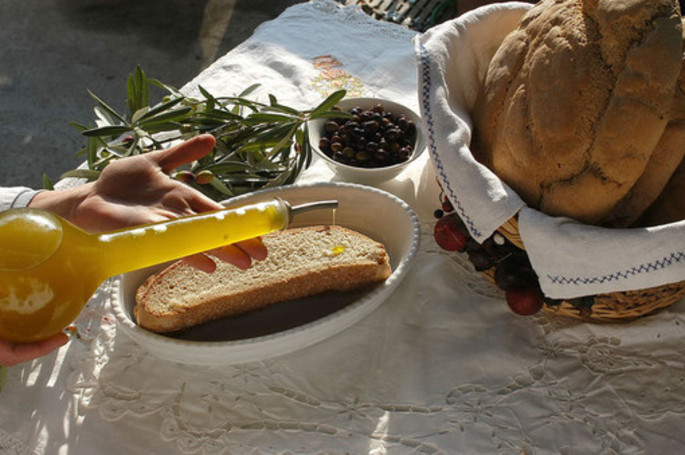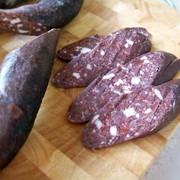The 13 famous itineraries of the Olive Oil Route in Liguria:
Finale Ligure - Vezzi Portio - Spotorno Manie, the Rocche Bianche, the Arma Cave, the historical vineyards. The Finale Ligure and Spotorno's hinterland is an area full of interesting sites from an historical and environmental point of view. Here one can visit the Arma and Annunziata Cave, refuge of the ancient Ligurian dwellers.
Finale Ligure - Orco Feglino - Calice Ligure - Rialto Rock climbing, historical villages, castles, olive groves, historical vineyards, baroque churches. A thousand and more trails, gorges and cliffs all immersed in the maquis. Here one can find rock climbing areas, remains of the medieval castle and the church of St. Nicolò a Calice.
Borgio Verezzi - Tovo San Giacomo - Calice Ligure Terraces overlooking the sea and caves. Tipical of the area of Borgio Verezzi are the terraces overlooking the sea, built by men to shape the agricultural landscape, and carsic caves.
Loano - Giustenice - Ranzi - Pietra Ligure - Magliolo - Tovo San Giacomo The Maremola stream, castles, churches, and prestigious olive groves. Among vineyards, orchards, olive groves one can enjoy the many paths to go hiking, climbing and mountain biking.
Loano - Boissano - Toirano - Borghetto Santo Spirito Mountains above the sea, urban olive groves, the historical site of Toirano, the caves. Driving up the road from Borghetto Santo Spirito reaching Toirano and then climbing up to the Giogo one is mesmerized by the surrounding rocky landscape.
Toirano - Balestrino - Castelvecchio R.B. - Erli - Zuccarello Large olive groves in bands, historical villages, the Zuccarello marquisate, Napoleonic memories. The Albenga hinterland is full of castles and fortified villages once used to control the important communication route between the coast and inland.
Albenga - Cisano sul Neva. The "big plain" seen from inland, floriculture, horticulture, greenhouses. In the broadest plain of Liguria, at the mouth of river Centa, sits the ancient village of Albenga which retains its compact medieval structure and soaring towers.
Villanova d'Albenga - Garlenda - Casanova Lerrone - Testico - Stellanello - Andora The olive grove and the mountain. The route starts from Villanova d'Albenga heading into Stellanello, via Garlenda, where you will find golf courses and an equestrian center, and Casanova Lerrone, ideal for interesting excursions through pine forests and olive groves.
Ortovero - Ranzo - Borghetto d'Arroscia - Vessallico - Rezzo - Pieve di Teco The Arroscia valley bottom at the feet of the Maritime Alps. Ancient agricultural settlement of the Arroscia valley, Ortovero is known for its cultivation of roses, peach and the production of Pigato and Rossese wine.
Arnasco - Vendone - Onzo - Acquila d'Arroscia – Vessalico Vineyards, olive-growing, wineries. The route starts in Arnasco, a rural center in Albenga's hinterland, and continues to Vendone, ideal place for excursions in nature; passing through olive groves, it, then, keeps going through Onzo to get to Acquila d'Arroscia.
Pieve di Teco - Montegrosso Pian Latte - Mendatica - Cosio d'Arroscia The mountain vineyard. A mountain corner in Liguria between Mendatica, Pornassio and Cosio d'Arroscia; the area is covered by tall trees forests and is surrounded by the Maritime Alps' peaks.
Pieve di Teco - Pornassio (Col di Nava) The Forts Route. A loop trail that connects the three forts built in defense of the pass: from the Fort Centrale's powerful defensive structure we reach Fort Bellarasco going through the well-preserved Fort Richermo.
Cisano sul Neva - Castelbianco – Nasino The stone landscapes in the village of Colletta, human traces in the Alps from Paleolithic to Roman times Olive and chestnut forests surround the villages of Nasino and Castelbianco. Nasino, an ancient Roman settlement, now a rural municipality, consists of small scattered groups of dwellings. In Castelbianco one can enjoy beautiful walks or horseback rides nestled among fruit trees.















